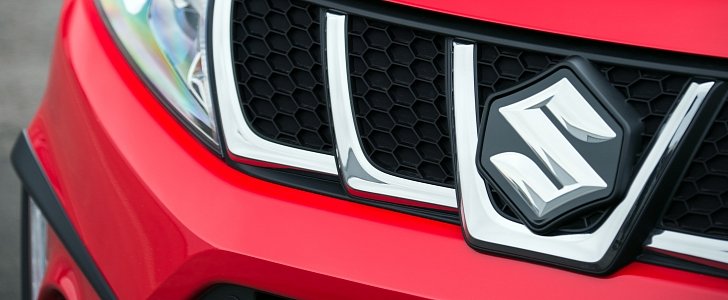Overstating fuel economy is getting more and more common these days. After Mitsubishi and GM, Suzuki has admitted to doing it.
They acknowledged it voluntarily through a press release published today, May 18, 2016. Suzuki performed an internal investigation following the instructions of the Japanese Ministry of Land, Infrastructure, Transport, and Tourism.
While the probe did not discover any act of cheating, injustice, or manipulation of data, Suzuki did find some discrepancies. Apparently, the Japanese brand realized that its emission and fuel efficiency testing procedures were different from the ones used by the Ministry of Land, Infrastructure, Transport, and Tourism.
Suzuki says it checked all 16 models in the current portfolio, and the differences were present in each of them. We are talking about cars that Suzuki sells in Japan, as this discrepancy only appears on this market.
According to researchers, there are some differences in the driving resistance data on the coasting test, where measured data was mistakenly replaced with a calculated build-up of measured information from individual components.
Because all of these elements behave differently in a system and on the road, instead of a wind tunnel, the resulting figures are not entirely accurate, especially when compared to Japan’s fuel economy testing procedure for new cars.
The oldest affected models were launched in 2010 (Jimny, Swift, and Jimny Sierra), while the newest cars to be homologated in Japan with miscalculated fuel economy came to market in 2016 (Baleno and Ignis). The list includes models like the Alto, Wagon R, SX4 S-Cross, Escudo, Solio, Spacia, Hutsler, Carry, and Every.
Suzuki also thinks that the location of the Sagara proving ground also contributed to the problem, as this is at the top of a hill which is close to the sea. The problem consists in the influence of the wind, as well as the humidity in the air. While the efficiency of modern cars is not affected by wind and moisture to a significant extent, variations in results and influences can appear.
Suzuki recommends its customers to continue using their products, as they fully comply with emission safety standards. The company considers that it does not have any problems, even though these discrepancies exist. Suzuki notes that the differences discovered between their values obtained in the standard Japanese coasting test and the evaluated ones on the Sagara proving grounds are within the range of measurement deviation.
In other words, Suzuki admitted to making a mistake in fuel economy testing, but the difference to the regular testing procedure is so small that it complies with the range of measurement deviation. You know, just like the potential inaccuracy of GPS devices for civilians.
While the probe did not discover any act of cheating, injustice, or manipulation of data, Suzuki did find some discrepancies. Apparently, the Japanese brand realized that its emission and fuel efficiency testing procedures were different from the ones used by the Ministry of Land, Infrastructure, Transport, and Tourism.
Suzuki says it checked all 16 models in the current portfolio, and the differences were present in each of them. We are talking about cars that Suzuki sells in Japan, as this discrepancy only appears on this market.
According to researchers, there are some differences in the driving resistance data on the coasting test, where measured data was mistakenly replaced with a calculated build-up of measured information from individual components.
Because all of these elements behave differently in a system and on the road, instead of a wind tunnel, the resulting figures are not entirely accurate, especially when compared to Japan’s fuel economy testing procedure for new cars.
The oldest affected models were launched in 2010 (Jimny, Swift, and Jimny Sierra), while the newest cars to be homologated in Japan with miscalculated fuel economy came to market in 2016 (Baleno and Ignis). The list includes models like the Alto, Wagon R, SX4 S-Cross, Escudo, Solio, Spacia, Hutsler, Carry, and Every.
Suzuki also thinks that the location of the Sagara proving ground also contributed to the problem, as this is at the top of a hill which is close to the sea. The problem consists in the influence of the wind, as well as the humidity in the air. While the efficiency of modern cars is not affected by wind and moisture to a significant extent, variations in results and influences can appear.
Suzuki recommends its customers to continue using their products, as they fully comply with emission safety standards. The company considers that it does not have any problems, even though these discrepancies exist. Suzuki notes that the differences discovered between their values obtained in the standard Japanese coasting test and the evaluated ones on the Sagara proving grounds are within the range of measurement deviation.
In other words, Suzuki admitted to making a mistake in fuel economy testing, but the difference to the regular testing procedure is so small that it complies with the range of measurement deviation. You know, just like the potential inaccuracy of GPS devices for civilians.

